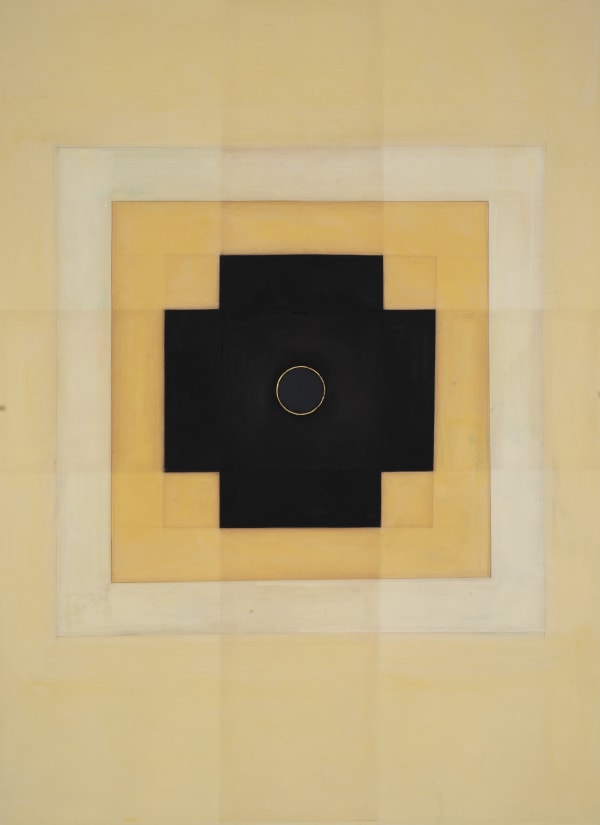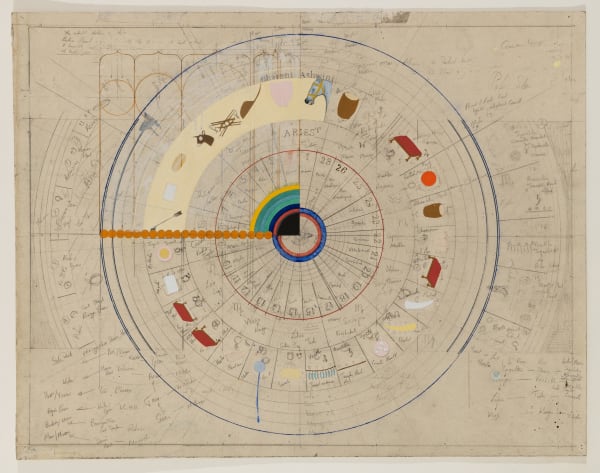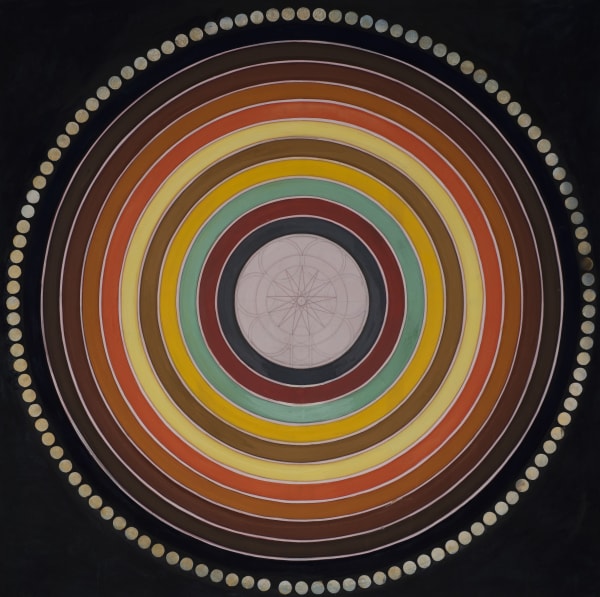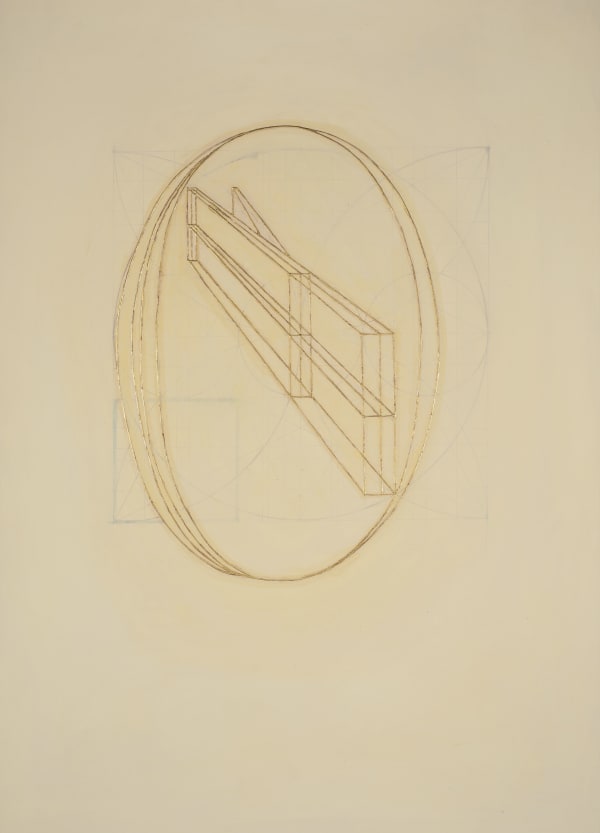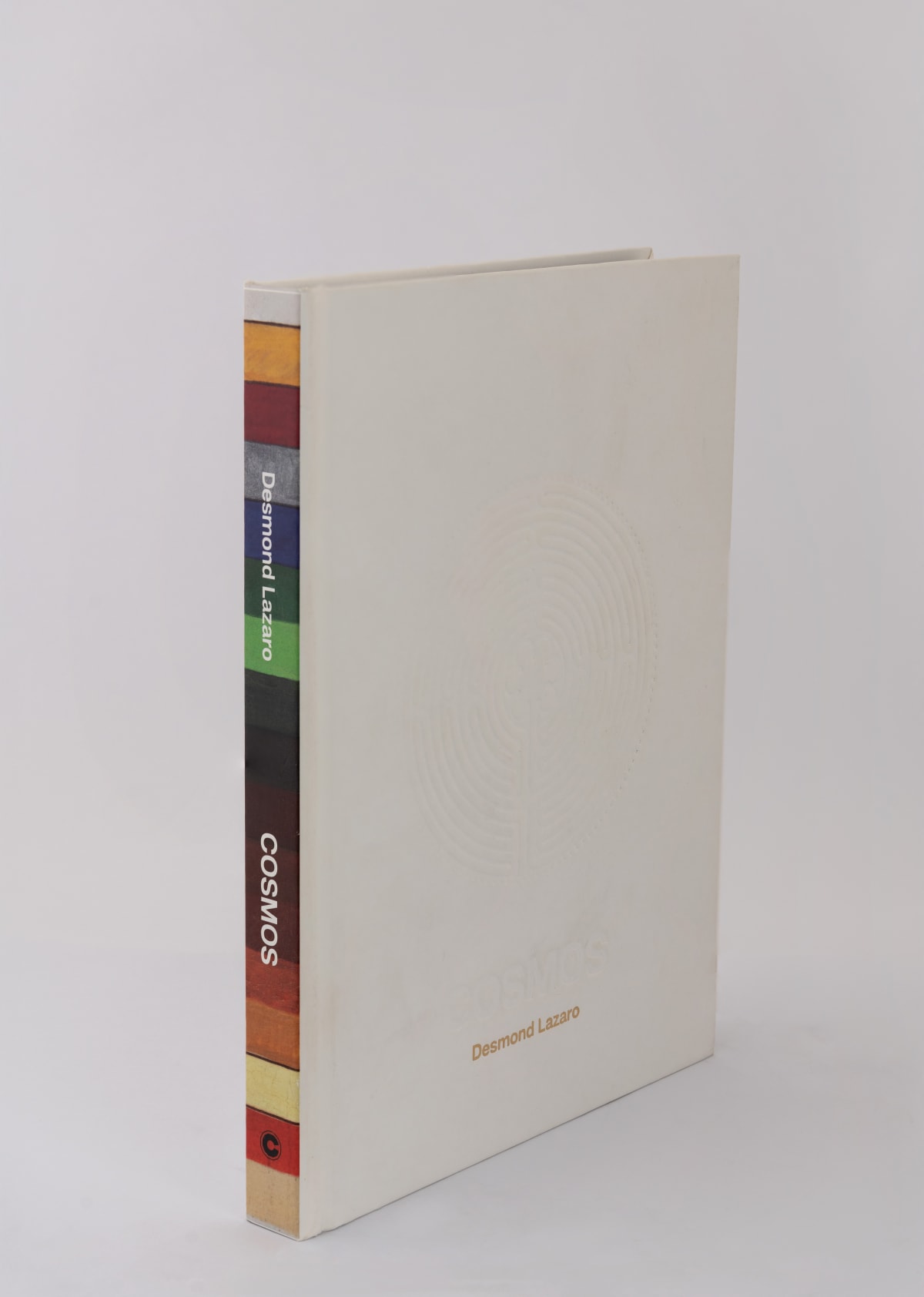Cosmos: Desmond Lazaro
Radical Homelessness: On Desmond Lazaro’s Recent Works
Desmond Lazaro’s art has often been situated in a history of diasporic experience spanning the colonial and postcolonial eras. The multiple geographical and cultural displacements in which his family has participated, across generations, would seem to support this choice ofexplanatory framework. What has rarely been noted is that the artist has also always been preoccupied with a deep condition that I would describe as radical homelessness: a preoccupation that he has articulated as a properly spiritual quest.
Lazaro refuses to have his choices overwritten by generic accounts of empire and nation-state, which emphasise foundational events of rupture and amnesia separating ‘pre-colonial’ or ‘pre-national’ pasts from the postcolonial or national present. Instead, he urges us to shift our conceptual framework and points to forms of continuity, both spiritual and philosophical, that are not constrained within historical time.
Lazaro’s recent series, ‘Cosmos’, gestures towards transcendence without missing a single visceral beat. Painstakingly created with natural pigments, ground by the artist in his studio and burnished with agate, these paintings could function as tools of consciousness. Walking through the 12th-century Chartres labyrinth or meditating on the Purusha or Cosmic Person in the Vastu Purusha Mandala is analogous to going on a spiritual quest. It depends on how ready we, the viewers, are to receive grace, divine or otherwise.
These paintings, an outcome of extensive research of medieval manuscripts, encyclopaedias, alchemical treatises and investigations into astrophysics, were born in bereavement. With the death of his beloved mother in 2018, Lazaro’s predicament of radical homelessness became more heightened. He would often scan the sky, wondering if he might find her there. But then the artist had an epiphany that he was “looking in the wrong direction… the greater metaphysical mystery remains on the other end of the telescope: who and what is doing the looking?”
We could parse this insight as the exertion of human agency rather than a submission to the vastness out there. Equally, we could interpret it as an understanding of a cosmic order that rests on the bridge of correspondence: the internal constitution has to resonate with the external order of the universe, the atman with the brahman, jiva with Shiva. In most religions and philosophies, the part is consonant with the whole, the self with the world. You cannot be disordered and hope to decipher the cosmic order.
— Nancy Adajania
-
 Desmond Lazaro, Vastu Purusha Mandala and the Star Cut Diagram, 2020
Desmond Lazaro, Vastu Purusha Mandala and the Star Cut Diagram, 2020 -
 Desmond Lazaro, The Venus Pentagram, After Giovanni Domenico Cassini 1771 & James Ferguson 1799, 2020-2021
Desmond Lazaro, The Venus Pentagram, After Giovanni Domenico Cassini 1771 & James Ferguson 1799, 2020-2021 -
 Desmond Lazaro, Purusha III, 2020
Desmond Lazaro, Purusha III, 2020 -
 Desmond Lazaro, Purusha II, 2020
Desmond Lazaro, Purusha II, 2020 -
 Desmond Lazaro, Precession, 2021
Desmond Lazaro, Precession, 2021 -
 Desmond Lazaro, Untitled, 2021
Desmond Lazaro, Untitled, 2021 -
 Desmond Lazaro, The Moons of Chartres, 2020-21
Desmond Lazaro, The Moons of Chartres, 2020-21 -
 Desmond Lazaro, Untitled, 2021
Desmond Lazaro, Untitled, 2021 -
 Desmond Lazaro, Herschel’s Galaxy and The Star Cut Diagram, 2020-21
Desmond Lazaro, Herschel’s Galaxy and The Star Cut Diagram, 2020-21 -
 Desmond Lazaro, Precession I, 2021
Desmond Lazaro, Precession I, 2021 -
 Desmond Lazaro, Precession II, 2021
Desmond Lazaro, Precession II, 2021 -
 Desmond Lazaro, Purusha IV, 2020-21
Desmond Lazaro, Purusha IV, 2020-21 -

-

-




